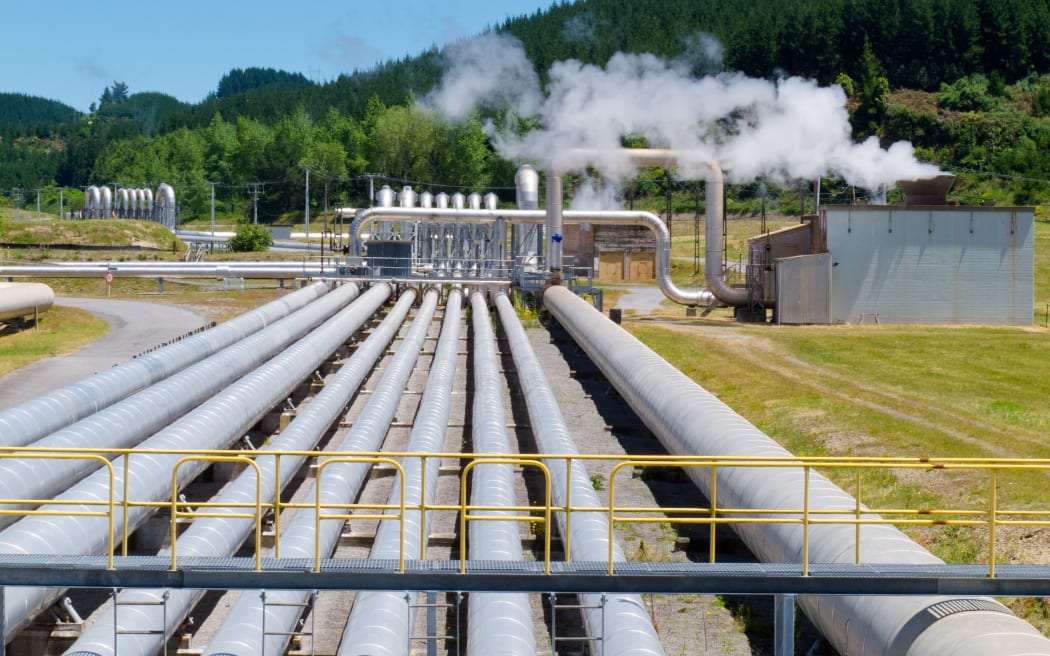Storing carbon dioxide in geothermal wells could be a cheap way to mitigate climate change, and New Zealand is well placed to lead the way, according to researchers at the University of Canterbury.
Last week the Government floated options to reform the Emissions Trading Scheme (ETS), which included the possibility of establishing a "removals market".

Photo: 123RF
Dr David Dempsey is a senior lecturer in civil and natural resources engineering at the University of Canterbury.
CO2 removal will be necessary alongside reduction in omissions, he says.
“It’s obviously important that we reduce the amount of CO2 that we're putting up there, but we've had about a century of more, putting a lot of it up and eventually we're going to need to take some of it out.
“If you look at these really interesting climate predictions that the IPCC make, to stay under 2 degrees, a lot of those require us to be removing CO2 from the atmosphere in the late 2050s and ‘60s.”
A geothermal well is like a “deep straw” that goes a couple of kilometres underground, he says.
“What it's doing is it's accessing a bunch of hot water down there, you're pulling it up, you're putting it through a turbine to generate electricity.
“Once you're done with the water, and you've cooled it off, you put it back in the ground again.”
That part of the process is already happening, he says.
“We've figured that out, which is the hard part and the very expensive part, drilling all those wells getting the turbine, the above ground system.”
The carbon sequestration part comes in through the co-location of forestry to many geothermal sites in the North Island, he says.
““Essentially you take a tree and burn it, you can use that extra energy to heat up your geothermal water a little bit more and get some more electricity out. And as a by-product of that combustion, you get some CO2.”
That CO2 is then dissolved into geothermal water which is pumped underground, “a bit like a soda stream”.
“What you've essentially got is a long pathway for CO2 to go from the atmosphere to deep underground.”
The infrastructure is already there, he says, and the required technology to store CO2 in this way not dauntingly complicated.
If the carbon is in the tree, why burn it in the first place? Why not just leave it in the tree? That’s all to do with available land, he says.
“You lock it up in a forest, and it will stay locked up, providing you don't harvest those trees ever again.
“Or if you harvest them, and they turn into a product, you can guarantee that their product is not going to end up landfills, eventually decomposing and releasing CO2.
So, if you want to go that route, that's fine. It's just that we may not have enough land area to grow enough forests to do enough CO2 removal.”
This idea reuses the land again and again, replanting, burning to make electricity and sequestering the resulting CO2.
Once the CO2 is underground, it is there for keeps, he says.
He estimates the idea could take 3 million tonnes of CO2 a year out of the atmosphere, which he says is a “respectable number”.
And it can be done relatively cheaply at $55 per tonne of CO2.
“Given that in the current voluntary markets overseas, you can sell something like that for $200 or $300. You've got a situation where the economics are working in your favour. And that's probably important, if you want to convince someone to invest and try this out.”
He sees potential for the technique to be used where ever there is geothermal generation in places such as Iceland, California, Indonesia, and Japan.

